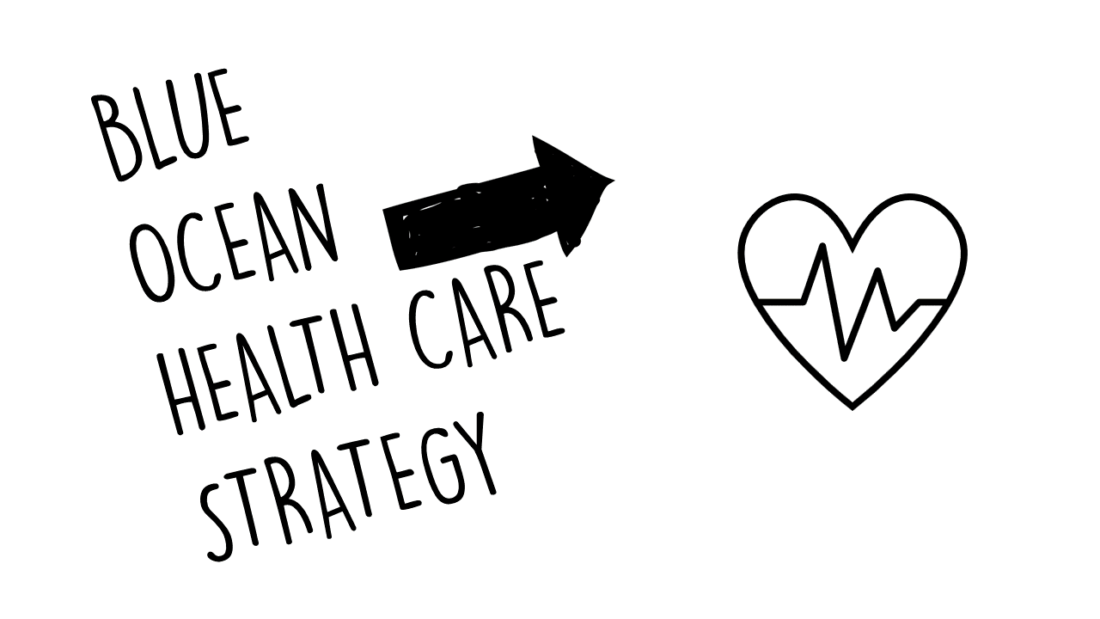Introduction: Understanding the Blue Ocean Strategy in Health Care
In today’s rapidly evolving health care industry, innovation and differentiation are crucial for organizations to stay competitive and meet the changing needs of patients and providers. One approach that has gained significant attention is the Blue Ocean Strategy. This strategy, developed by W. Chan Kim and Renée Mauborgne, focuses on creating uncontested market space by making competition irrelevant.
The Blue Ocean Strategy concept is based on the idea that organizations can achieve long-term success by creating new demand in untapped market spaces rather than competing in existing markets. By focusing on innovation and differentiation, organizations can create a “blue ocean” of new opportunities where they can thrive.
Defining Blue Ocean Strategy and its Application in the Health Care Industry
The Blue Ocean Strategy framework consists of four key principles: value innovation, strategic sequencing, tipping point leadership, and fair process. Value innovation involves creating a leap in value for both customers and the organization by offering a unique product or service that meets unmet needs. Strategic sequencing involves identifying the sequence of strategic moves that will lead to the successful implementation of the strategy. Tipping point leadership involves rallying support and overcoming resistance to change within the organization. Fair process involves involving all stakeholders in the decision-making process to ensure buy-in and commitment.
In the health care industry, the Blue Ocean Strategy can be applied by identifying untapped areas for innovation and growth. This could include areas such as telemedicine, preventive care, and personalized medicine. By focusing on these areas, organizations can create new demand and differentiate themselves from competitors.
The benefits of adopting a Blue Ocean Strategy approach in health care are numerous. By creating uncontested market space, organizations can avoid competing solely on price and instead focus on delivering unique value to patients and providers. This can lead to increased patient satisfaction, improved outcomes, and ultimately, long-term success for the organization.
Examining the Current Challenges and Limitations in Health Care
The health care industry faces numerous challenges and limitations that can hinder innovation and differentiation. Rising costs, access to care, and quality of care are just a few examples of the issues that organizations must navigate.
Rising costs in health care have been a major concern for both patients and providers. The high cost of medical treatments and procedures can make it difficult for patients to afford necessary care, while providers struggle to maintain profitability. This can create a barrier to innovation, as organizations may be hesitant to invest in new technologies or approaches due to financial constraints.
Access to care is another challenge in the health care industry. Many individuals, particularly those in underserved communities, face barriers to accessing necessary medical services. This can limit the potential for innovation and differentiation, as organizations may not see a demand for new products or services in these areas.
Quality of care is also a significant concern in health care. Patients expect high-quality, evidence-based care, but variations in practice and lack of standardization can lead to inconsistencies in outcomes. This can make it difficult for organizations to differentiate themselves based on quality alone.
Identifying Untapped Opportunities for Innovation and Growth in Health Care
Despite the challenges and limitations faced by the health care industry, there are numerous untapped opportunities for innovation and growth. By identifying these opportunities, organizations can create new demand and differentiate themselves from competitors.
One area of opportunity is telemedicine. Telemedicine allows patients to receive medical consultations and treatment remotely, eliminating the need for in-person visits. This can improve access to care for individuals in rural or underserved areas, as well as reduce costs associated with travel and wait times. By investing in telemedicine technologies and services, organizations can tap into a new market space and differentiate themselves from competitors.
Preventive care is another area of opportunity in health care. By focusing on preventive measures such as screenings, vaccinations, and lifestyle interventions, organizations can help patients avoid costly and debilitating diseases. This not only improves patient outcomes but also reduces the burden on the health care system. By offering comprehensive preventive care services, organizations can differentiate themselves and create new demand.
Personalized medicine is also a promising area for innovation and growth. Personalized medicine involves tailoring medical treatments and interventions to individual patients based on their unique genetic makeup, lifestyle, and preferences. By offering personalized medicine services, organizations can provide more targeted and effective care, leading to improved outcomes and patient satisfaction.
Case Studies: Successful Implementation of Blue Ocean Strategy in Health Care
Several organizations have successfully implemented the Blue Ocean Strategy in the health care industry, leading to significant innovation and growth. One example is the Cleveland Clinic, which implemented a Blue Ocean Strategy by focusing on patient experience and outcomes. The organization invested in technologies such as telemedicine and remote monitoring to improve access to care and reduce costs. By differentiating themselves based on patient-centered care and innovative technologies, the Cleveland Clinic was able to create a blue ocean of new opportunities.
Another example is 23andMe, a direct-to-consumer genetic testing company. 23andMe differentiated itself by offering personalized genetic testing services that provide individuals with insights into their ancestry, health risks, and traits. By tapping into the growing interest in personalized medicine, 23andMe was able to create a new market space and establish itself as a leader in the industry.
Analyzing the Key Elements of a Successful Blue Ocean Strategy in Health Care
Several key elements contribute to a successful Blue Ocean Strategy in health care. First and foremost is understanding customer needs. Organizations must have a deep understanding of the needs and preferences of patients and providers in order to create value and differentiate themselves. This requires conducting market research, engaging with stakeholders, and continuously seeking feedback.
Value creation is another important element of a successful Blue Ocean Strategy. Organizations must focus on creating unique value for customers that meets unmet needs. This could involve offering innovative products or services, improving access to care, or enhancing the patient experience. By creating value, organizations can attract and retain customers, leading to long-term success.
Differentiation is also crucial in a Blue Ocean Strategy. Organizations must find ways to differentiate themselves from competitors in order to create uncontested market space. This could involve offering unique features or benefits, targeting specific customer segments, or leveraging technology and data analytics. By differentiating themselves, organizations can stand out in a crowded market and attract customers.
Strategies for Creating Value and Differentiation in the Health Care Market
Creating value and differentiation in the health care market requires strategic thinking and innovative approaches. One strategy is to focus on the patient experience. By offering personalized care, convenient access to services, and clear communication, organizations can create a positive experience for patients that sets them apart from competitors.
Another strategy is to leverage technology and data analytics. By investing in technologies such as telemedicine, electronic health records, and data analytics tools, organizations can improve efficiency, reduce costs, and deliver more personalized care. This can create a competitive advantage and differentiate the organization from others in the market.
Collaboration is also an effective strategy for creating value and differentiation in the health care market. By partnering with other organizations, such as insurers, pharmaceutical companies, or technology providers, organizations can leverage their expertise and resources to deliver comprehensive solutions to patients and providers. This can create a unique value proposition and set the organization apart from competitors.
Leveraging Technology and Data Analytics to Drive Blue Ocean Strategy in Health Care
Technology and data analytics play a crucial role in driving Blue Ocean Strategy in health care. By leveraging technology, organizations can create new opportunities for innovation and growth.
For example, telemedicine allows patients to receive medical consultations and treatment remotely, improving access to care and reducing costs. Electronic health records enable seamless sharing of patient information, improving coordination of care and patient outcomes.
Data analytics tools allow organizations to analyze large amounts of data to identify trends, patterns, and opportunities for improvement.
By leveraging technology and data analytics, organizations can gain insights into patient needs and preferences, identify areas for improvement, and develop innovative solutions. This can lead to the creation of new market spaces and differentiation from competitors.
Overcoming Barriers to Change and Adoption of Blue Ocean Strategy in Health Care
While the Blue Ocean Strategy offers numerous benefits, there are often barriers to change and adoption in the health care industry. Common barriers include resistance to change, lack of resources, and regulatory constraints.
Resistance to change is a common barrier in any industry, including health care. Organizations may be hesitant to adopt new strategies or technologies due to fear of the unknown or concerns about disrupting existing workflows. Overcoming resistance to change requires effective leadership, clear communication, and a culture that embraces innovation.
Lack of resources can also hinder the adoption of Blue Ocean Strategy in health care. Implementing new technologies or approaches often requires significant financial investment, which may not be feasible for all organizations. Finding creative ways to secure funding, such as through partnerships or grants, can help overcome this barrier.
Regulatory constraints are another challenge in the health care industry. The complex regulatory environment can make it difficult for organizations to implement new strategies or technologies. Engaging with regulatory bodies, staying up-to-date on changes in regulations, and advocating for policy changes can help overcome this barrier.
Conclusion: Embracing a New Era of Innovation in Health Care through Blue Ocean Strategy
In conclusion, the Blue Ocean Strategy offers a powerful framework for organizations in the health care industry to drive innovation and differentiation. By identifying untapped areas for growth and creating unique value for customers, organizations can create uncontested market space and achieve long-term success.
Despite the challenges and limitations faced by the health care industry, there are numerous opportunities for innovation and growth. By leveraging technology, focusing on the patient experience, and collaborating with other organizations, organizations can create new market spaces and differentiate themselves from competitors.
To embrace a new era of innovation in health care, organizations must overcome barriers to change and adoption of Blue Ocean Strategy. This requires effective leadership, clear communication, and a culture that embraces innovation. By doing so, organizations can drive positive change in the industry and improve outcomes for patients and providers.




